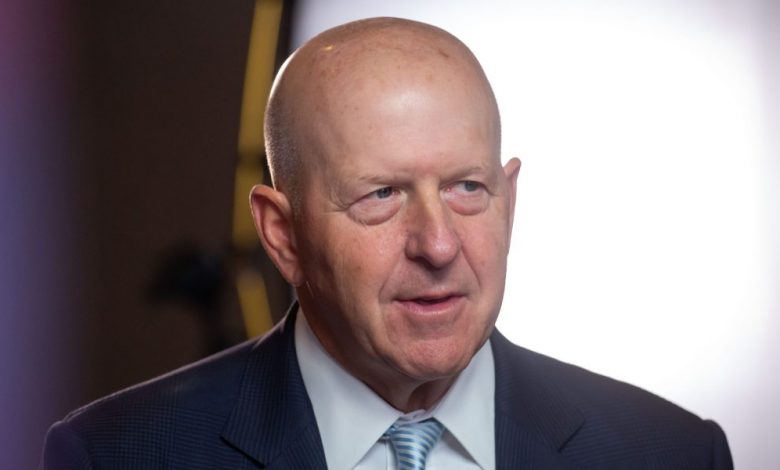Goldman Sachs considers cutting bonuses for investment bankers by 40%

A year after Goldman Sachs paid out the biggest bonuses on Wall Street, the investment banking giant is considering a roughly 40% cut in bonuses for bankers — the biggest cut in payouts since the 2008 financial crisis.
The bonus cuts for the bank’s 3,000 investment bankers – first reported by Semafor and further detailed by the financial times – are reportedly lower than many of the bank’s Wall Street rivals, fueling fears the bank could face higher staff turnover next year. Bonuses for Goldman’s top 400 partners could even be cut by about half as senior bankers bear the brunt of the pay cuts, Semafor said reported.
Last year “was an exceptional year for the company,” Solomon said on Bloomberg Television, adding that 2022 is a “different year and so naturally compensation will be lower.”
economic headwind
While Goldman Sachs weathered the soaring interest rates and weak economy of the second half of 2022 largely better than its Wall Street peers, CEO David Solomon has consistently warned of a worsening economic outlook for the next year.
In the Wall Street JournalAt last week’s CEO Council Summit, Solomon said he expects stock markets to continue their slide into 2023 and put the chance of a recession hitting the US economy at about two-thirds. At Goldman competitor Bank of America, CEO Brian Moynihan said at the Goldman Sachs Financial Conference 2022 that the bank’s research showed “negative growth” in the first half of 2023, but noted that the GDP contraction would be “mild”.
In his speech at the Goldman financial services conference, Solomon pointed to these economic headwinds as a reason for bonus cuts. Compensation costs are the largest item on Goldman’s spending line, he said, and “bumpy times ahead for the global economy” would mean compensation would decline from last year’s levels.
Economics aside, pressure to lower compensation costs at Goldman Sachs can be attributed to Solomon’s focus on raising the bank’s stock valuation and allaying shareholder concerns. In February, the banking giant set a target to increase its return on equity, a key measure of profitability, to 14% — a target Solomon missed by 2% on Sept. 30. Now that money is drying up in the market, Goldman’s CEO must choose between wooing the bank’s shareholders or rewarding its employees.
Pay cuts for the top
Banks face the tricky balancing act of containing overall spending while rewarding their top performers in a crowded talent market – and do so as the market goes from celebration to famine.
While big banks have seen a boom in investment activity over the past year as COVID restrictions eased, the fall in demand following Russia’s invasion of Ukraine has made many companies more cautious about making corporate deals and raising money in the market – right the kind of deals that fill banks’ coffers.
Bank of America’s capital markets arm is expected to see total compensation fall by more than a third financial times reported, with senior managers suffering most of the damage. Junior staff rewards are less flexible, often tied to pay scales and significant pay rises for promotions.
Other Wall Street banks like JPMorgan Chase and Citigroup are all reportedly considering cutting their investment banking bonuses by 30%.
Layoffs for the bottom
While top bankers have to cut their bonuses as banks try to lower compensation costs, junior bankers face job losses.
Morgan Stanley announced on December 6 that it would cut 2% of its global workforce, or about 1,600 employees from its 80,000-strong team. Meanwhile, in September, Goldman Sachs began its largest job cuts since the pandemic began, cutting several hundred jobs at its 47,000-strong company.
Bank of America is bucking the trend by attributing most of the workforce reductions to natural attrition. Once employees leave the company voluntarily, the bank will leave vacancies unfilled, moving employees around and retraining them as needed, Moynihan said in a news conference.
Many banks are also returning to the Wall Street ritual of weeding out their weakest performers. Big Wall Street banks, including Citigroup, Barclays, and Goldman Sachs, typically cut the bottom 1% to 5% of workers they believe are the worst performers, just before bonuses are paid. For most banks, the practice was suspended in 2020 after the pandemic sparked a two-year boom in activity and deals.
Goldman’s decision on bonuses is likely to be finalized later this month before being announced and paid out in January.
“Compensation at Goldman Sachs is driven by the performance of the company as a whole, not each division. The compensation process is ongoing, so any discussion or forecast of specific numbers is premature,” a Goldman Sachs spokesman said in a statement.
Our new weekly Impact Report newsletter explores how ESG news and trends are shaping the roles and responsibilities of today’s leaders. Subscribe here.



